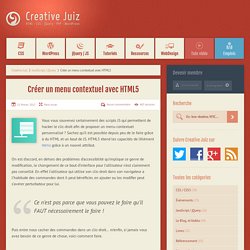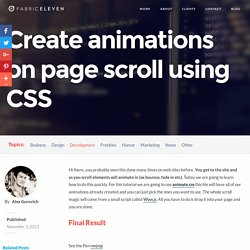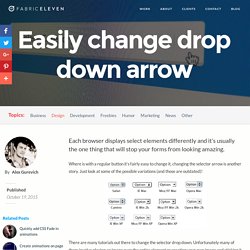

The failed promise of Web Components – Lea Verou. Web Components had so much potential to empower HTML to do more, and make web development more accessible to non-programmers and easier for programmers.

Remember how exciting it was every time we got new shiny HTML elements that actually do stuff? Remember how exciting it was to be able to do sliders, color pickers, dialogs, disclosure widgets straight in the HTML, without having to include any widget libraries? The promise of Web Components was that we’d get this convenience, but for a much wider range of HTML elements, developed much faster, as nobody needs to wait for the full spec + implementation process. We’d just include a script, and boom, we have more elements at our disposal!
Or, that was the idea. Perusing the components on webcomponents.org fills me with anxiety, and I’m perfectly comfortable writing JS — I write JS for a living! Besides setup, the main problem is that HTML is not treated with the appropriate respect in the design of these components. A practical guide to learning front end development for beginners. By Nikita Rudenko I started my coding journey in spring 2018, a bit less than one year ago.

I earned some programming skills since that time but still, I understand there are many more things to learn ahead. Anyway, I decided to gather these tips in a single place to help future developers on their path. This article is the guide I would have liked to have found when I started my journey. Before Starting If you decided to study on your own, there is a lot of information on the Internet and it’s hard to wrap your head around everything. Please note that these are just the first steps into the front-end universe. As a disclaimer, please note that the following resources are not an advertisement. As a starting point, I recommend signing up on freeCodeCamp. Curriculum. Pro tip: you can create an account on Twitter, if you don’t have one yet, and publicly commit to the 100DaysOfCode challenge. A Preview of HTML 5. Abstract#section1 The web is constantly evolving.

New and innovative websites are being created every day, pushing the boundaries of HTML in every direction. HTML 4 has been around for nearly a decade now, and publishers seeking new techniques to provide enhanced functionality are being held back by the constraints of the language and browsers. Article Continues Below To give authors more flexibility and interoperability, and enable more interactive and exciting websites and applications, HTML 5 introduces and enhances a wide range of features including form controls, APIs, multimedia, structure, and semantics. Work on HTML 5, which commenced in 2004, is currently being carried out in a joint effort between the W3C HTML WG and the WHATWG. Note that the specification is still a work in progress and quite a long way from completion. Wordpress - images responsive. Comprendre z-index et les contextes d'empilement - Vincent De Oliveira.
Cet article est une traduction de What No One Told You About Z-Index écrit par Philip Walton le 22 décembre 2012.

Ce que personne ne vous a dit sur z-index Le problème avec z-index, c’est que très peu de personnes ont réellement compris son fonctionnement. Ce n’est pas très compliqué, mais si vous n’avez jamais pris le temps de lire la spécification, il y a certainement des aspects cruciaux qui vous ont échappé. Vous ne me croyez pas? Ok, voyons si vous pouvez résoudre ce problème? Le problème Dans le HTML suivant, vous avez trois <div>, et chaque <div> contient un seul élément <span>. Please Stop Using Local Storage. Seriously.

Just stop it already. I don’t know what it is, exactly, that drives so many developers to store session information in local storage, but whatever the reason: the practice needs to die out. Things are getting completely out of hand. Créer un menu contextuel avec HTML5 - JavaScript / jQuery. Vous vous souvenez certainement des scripts JS qui permettent de hacker le clic-droit afin de proposer un menu contextuel personnalisé ?

Sachez qu’il est possible depuis peu de le faire grâce à du HTML et un bout de JS. HTML5 étend les capacités de l’élément menu grâce à un nouvel attribut. On est d’accord, en dehors des problèmes d’accessibilité qu’implique ce genre de modification, le changement de ce bout d’interface pour l’utilisateur n’est clairement pas conseillé. En effet l’utilisateur qui utilise son clic-droit dans son navigateur a l’habitude des commandes dont il peut bénéficier, en ajouter ou les modifier peut s’avérer perturbateur pour lui.
Ce n’est pas parce que vous pouvez le faire qu’il FAUT nécessairement le faire ! Puis entre nous cacher des commandes dans un clic-droit… m’enfin, si jamais vous avez besoin de ce genre de chose, voici comment faire. Create animations on page scroll using CSS. Hi there, you probably seen this done many times on web sites before.

You get to the site and as you scroll elements will animate in (ex bounce, fade in etc). Today we are going to learn how to do this quickly. For this tutorial we are going to use animate.css this file will have all of our animations already created and you can just pick the ones you want to use. The whole scroll magic will come from a small script called Wow.js All you have to do is drop it into your page and you are done. Final Result See the Pen mejvpj What we will use: animate.css – can be downloaded herewow.js – can be downloaded here. Change the Default Select Drop-Down List.
In this article I’m going to help you style a Select drop-down input with just CSS without the need for javascript.

Ok let’s get to it! So here’s the story – The awesome designer in your team sends you a new PSD (Photoshop Document) with the final design of a new website or app. You go through the different documents looking at all the pages that will be be included in the new site. Changing Drop Down selector Arrow. Each browser displays select elements differently and it’s usually the one thing that will stop your forms from looking amazing.

Where is with a regular button it’s fairly easy to change it, changing the selector arrow is another story. Just look at some of the possible variations (and those are outdated)! There are many tutorials out there to change the selector drop down. Unfortunately many of them involve placing an image over the entire element or creating your own image and sticking it in the corner. The below solution will work for all browsers and only take seconds to implement and only needs some CSS! Introduction to JavaScript Source Maps - HTML5 Rocks. Have you ever found yourself wishing you could keep your client-side code readable and more importantly debuggable even after you've combined and minified it, without impacting performance?

Well now you can through the magic of source maps. Basically it's a way to map a combined/minified file back to an unbuilt state. When you build for production, along with minifying and combining your JavaScript files, you generate a source map which holds information about your original files. When you query a certain line and column number in your generated JavaScript you can do a lookup in the source map which returns the original location. Developer tools (currently WebKit nightly builds, Google Chrome, or Firefox 23+) can parse the source map automatically and make it appear as though you're running unminified and uncombined files. Demo: Get original location The above demo allows you to right click anywhere in the textarea containing the generated source.